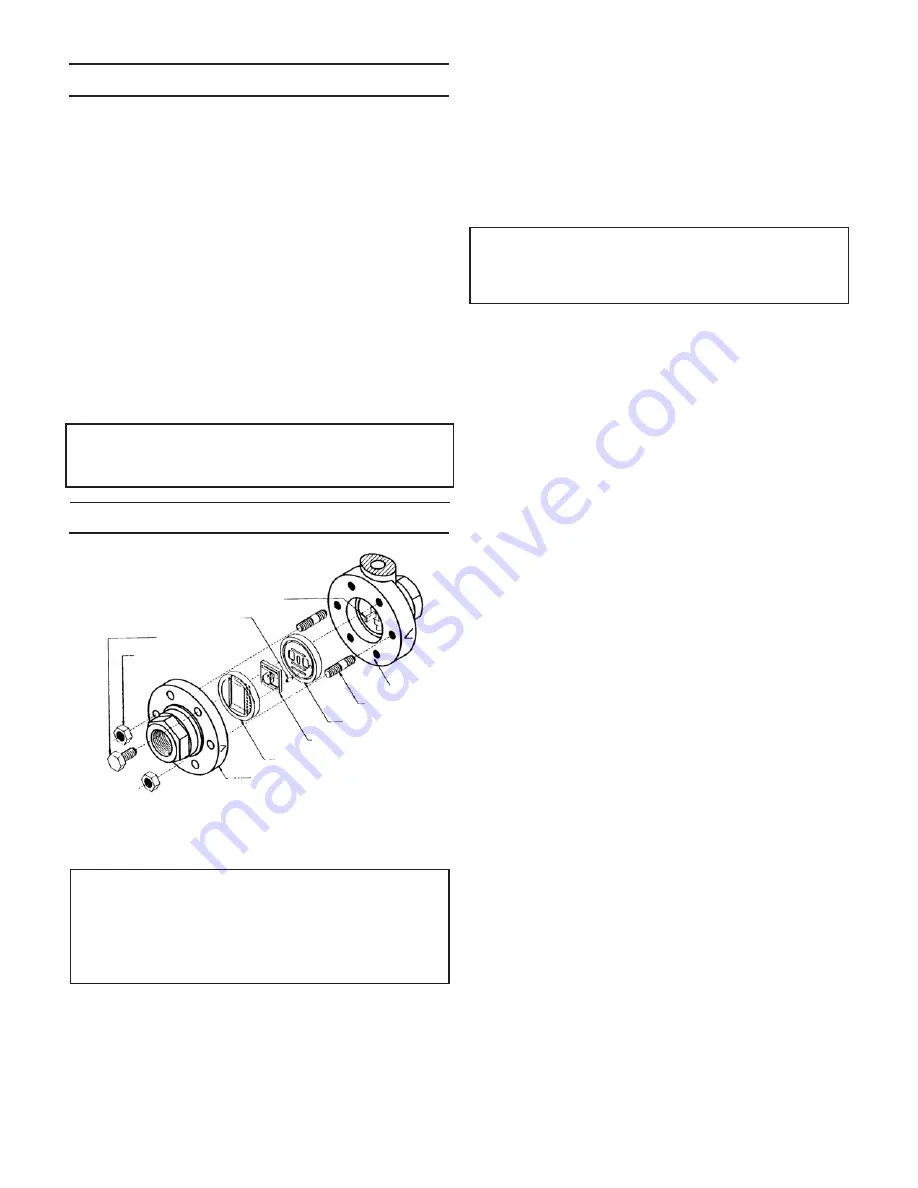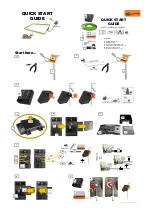
protect the lapped surfaces on both sides of the
disc guide. Before removing, check the disc (17)
for a stamped arrow. This arrow points to the “<”
on the valve body. (NOTE: discs that can be rotated
180° without affecting the stroke may not have ar-
rows.) Lift straight up on the disc (17). Place the
disc on the bench lapped surface facing up. Re-
move the index pin (21).
It is imperative that the disc pin (14) assembly is not
rotated when disassembling, cleaning or reassem-
bling, since this affects the stroke adjustment of the
valve.
4.
Invert the body and lightly tap on the exterior to re-
move the plate (16). Let the plate drop out into your
hand, and place it on the bench with the lapped
surface facing up. If the plate sticks lightly tap on
the back of the plate with a soft blunt object; push
the plate (16) out evenly.
5.
Clean all the parts, body and cap with solvent. In-
spect body and cap bores for damage. If the parts
are scarred, do not attempt to re-lap them, but re-
turn them to the factory for repair or replacement.
6.
The vertical sections of the disc guide (18) serve
as guides for the disc (17) while stroking. A 0.005
feeler gauge should be used to check for clearance
between this surface and the side of the disc. If the
clearance is less, clean the guide surfaces in the
disc guide with a fine file.
B. REASSEMBLY
1.
Lightly coat the outer ring on the unlapped side or
the plate (16) with anti-seize compound.
2.
Place the plate (16) in the body, lapped surface fac-
ing the cap. The index-pin hole should be on the
same side of the body as the “<” on the body. Align
the disc pin (14) so that it is centered in the body
bore and that it protrudes through the center slot in
the plate (16). Place the disc (17) on the plate (16),
engaging the disc pin (14). The arrow on the disc
(17) should point to the index-pin hole. Insert the
index-pin (21) in the hole.
3.
Coat the outer ring on the side of the disc guide
without the index pin hotel, with a light coating of
anti-seize compound.
4.
Place the disc guide onto the plate (16), engag-
ing the index pin (19). Rotate the assembly slightly
until the slot openings in the disc are parallel to
the openings in the plate, and perpendicular to the
stem. Stroking the valve will aide in this alignment.
5.
Align the “>” on the cap (19) with the “<” on the
body (12), and place the cap over the two studs in
the body.
6.
Install the nuts and cap bolts (20). Tighten uni-
formly. See page four for torque requirements and
tightening procedures.
Maintenance
Caution: Ensure that the valve is de-pressurized be-
fore loosening any fittings or joints. The following
steps are recommended before performing any main-
tenance on the valve:
1.
Close the inlet shut-off valve.
2.
Allow pressure to bleed off through the down-
stream piping. Do not attempt to reverse the flow
through the valve by bleeding pressure from the
upstream side of the valve.
3.
When the pressure gauges indicate that all pres-
sure has been removed from the system, close the
outlet shut-off valve. The valve may be removed
from the line and serviced.
Note: Refer to the drawing at the end of this docu-
ment for description and proper orientation of parts.
Valve Seats
A. DISASSEMBLY
Jordan Valve Sliding Gate Seats are lapped to
light band flatness. Maintaining such tolerances
is of paramount importance for your assurance of
excellent control and tight shutoff. DO NOT use
metallic objects in removing the seats. Care in
handling is important.
1.
Following the Maintenance procedures to remove
the valve from line.
2.
Note scribes “<” on the side of the body (12) and
cap (19). Secure the body flats in a vise. Remove
the cap bolts (20) and two nuts from the studs. Lift
the cap straight up.
3.
Remove the disc guide (18) by lifting straight up –
-2-
Cap (19)
Disc Guide (18)
Valve Disc (17)
Valve Plate (16)
Studs (2)
Body (12)
Disc Pin (14)
Index Pin (21)
Cap Screws (20)
Hex Nuts (2)























